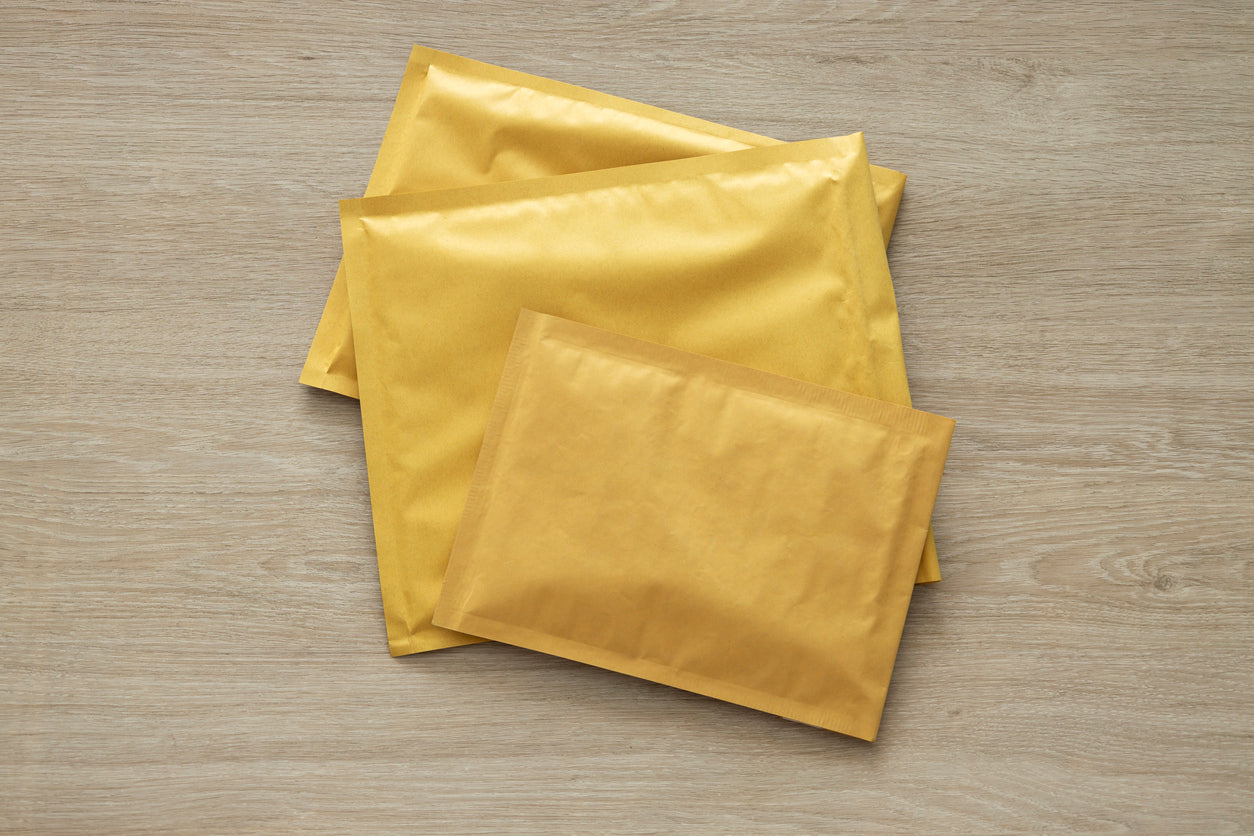When it comes to picking poly mailers, you generally have two top-level choices: regular poly mailers or biodegradable ones.
But how can you decide which one is right for you? The key is to understand the differences between the two.
Here’s what you need to know.
What Are Regular Poly Mailers?
Poly mailers are lightweight but sturdy plastic bags designed to ship products. They have a self-sealing foldover lip so no tape is needed, and a shipping label can be directly affixed to the bag. They’re thin yet durable so they don’t take up much space on a truck while in transit.
As the name implies, poly mailers are made out of polyethylene plastic.
The Benefits of Regular Poly Mailers
When it comes to traditional poly mailers, there are a number of key benefits that they offer. This includes:
- Extreme durability
- Moisture-resistance
- Versatile sizes and dimensions
- Customizability
This is why poly mailers have become the gold standard for shipping many small goods.
The Challenges of Regular Poly Mailers
For all of their pros, there are a few cons to traditional poly mailers, not least of which is the fact that they’re made from plastic that needs to be recycled and doesn’t break down naturally.
This means that, unless the sender or receiver reuses the mailer and then properly disposes of it in the recycling, it could end up in a landfill where it won’t biodegrade.
What Are Biodegradable Poly Mailers?
On the flip side of the coin, you’ll find biodegradable poly mailers. These are made of compostable materials with the goal of being able to break down naturally over time. And, due to changing consumer preferences, demand for these products has skyrocketed in recent years.
The Benefits of Biodegradable Poly Mailers
In addition to all of the benefits offered by regular poly mailers, the obvious added benefit of biodegradable poly mailers is their ability to be composted. So, in theory, they should be able to break down, regardless of the manner in which they’re disposed.
But it’s not always that simple.
The Challenges with Biodegradable Poly Mailers
One of the biggest pitfalls when it comes to biodegradable poly mailers is that they run the risk of contaminating the entire recycling process.
That’s because, given the rise of recycling--which is good for the environment and creates new products in a sustainable way--many people try to recycle biodegradable materials without even realizing there's a difference, let alone why it matters.
This is problematic because biodegradable materials contain additives that help them break down over time. But, if those additives get into something recycled, it can cause serious problems.
For example, if biodegradable materials, and the additives contained in them, end up mixed in with recycled materials that go on to become PVC piping or deck-building materials, those items run the risk of losing their structural integrity over time and could collapse.
This is counterproductive to the entire purpose of recycling and, worse yet, could result in injuries or damage.
To get a better idea of how to properly recycle poly mailers, you may want to access our article on the topic.
So, ultimately, both traditional and biodegradable poly mailers have their benefits and challenges. The key is to figure out which one is best suited for your project.
And that’s where we come in.
Want to learn more about our poly and compostable mailers? Get in touch with us today. Our team is here to help.

